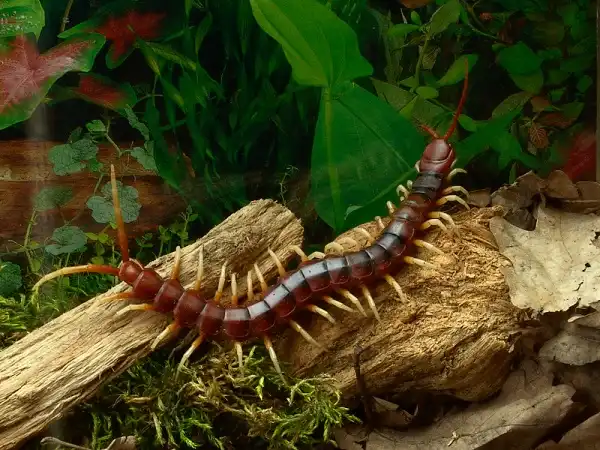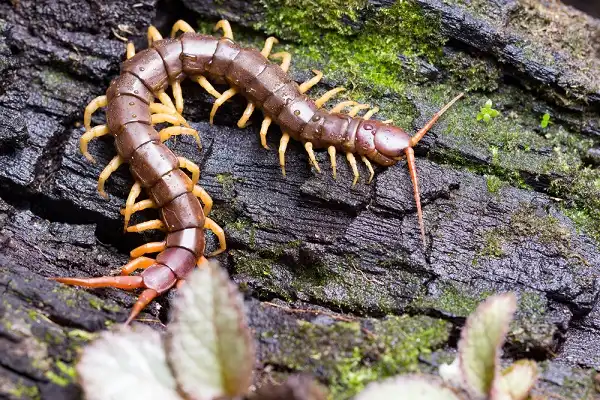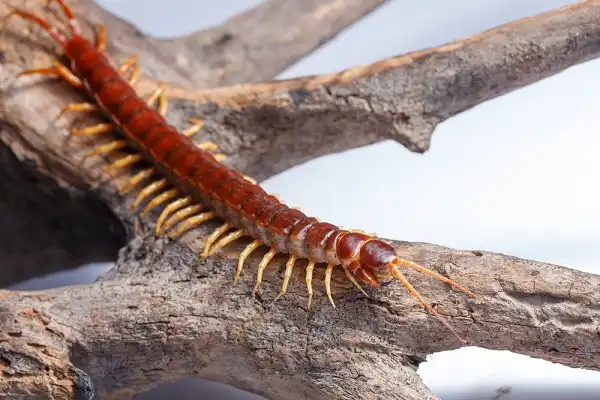As anyone who has seen them can attest, centipedes are creepy. They have too many legs, they’re usually fast, and they can even bite. But as it turns out, these creatures may be even creepier than we thought. A new study has found that centipedes are intelligent enough to use tools.

Centipede Description
Centipedes are small arthropods that belong to the class Chilopoda. Centipedes have an elongated, segmented body, with one pair of legs per body segment. Most species of centipedes have 15 pairs of legs; however, some species may have fewer or more than this number. The head of the centipede is rounded and appears to be somewhat flattened on top. Two short antennae protrude from the head, while its mouthparts consist of two sets of mandibles and two sets of maxillae. Centipedes typically possess venomous claws at the front end of their bodies, which they use to capture prey and defend themselves against predators.
Centipede Habitat
Centipedes can be found in a variety of different habitats, ranging from deserts to forests, grasslands to wetlands and even urban areas such as cities and towns. The most common habitats for centipedes are dark, moist places with plenty of organic matter such as fallen leaves, bark or rotting wood.
Centipedes prefer cooler temperatures and generally stay away from direct sunlight. In the desert regions of North America, centipedes can be found living under rocks or in underground burrows where they hide during the heat of the day and come out at night to hunt for prey. In wetter climates, centipedes often live in leaf litter on the forest floor. They also find shelter in rock piles, logs, under tree bark and among roots or grass clumps.
Centipede Diet
Centipedes are carnivores that primarily feed on small insects such as moths, flies and spiders. They also sometimes scavenge carrion for an additional food source. To capture prey, centipedes use their venomous claws at the front end of their body to inject their victims with a neurotoxin which paralyzes them before being consumed. Because they are nocturnal hunters, centipedes generally stay hidden during the day and come out at night to search for food.
They use their antennae to locate prey, which they then capture with their claws and inject with venom before consuming. Despite this seemingly independent lifestyle, centipedes have been known to cooperate when hunting large prey such as lizards or snakes – a behavior which has only recently been observed in invertebrates and is yet another sign of the intelligence attributed to these fascinating creatures.

Centipede Size
Centipedes come in a range of sizes with the smallest species usually measuring around 1 cm, while the largest can reach lengths of up to 12 inches. However, it is important to note that size can vary between individuals depending on their particular genus and species. In terms of colouration, centipedes are generally brown or greyish-black although some may have red or yellow stripes along their bodies.
Centipede Lifespan
The lifespan of a centipede can vary considerably between species, with some living for several years while others may only live for a few months. However, the average lifespan is usually between one and two years. It should be noted that if a centipede is kept in captivity its longevity can be increased significantly due to the controlled environment and lack of predators.
Centipede Behavior
Centipedes are active predators, usually searching for food at night. They typically search for prey by using their long antennae to detect vibrations and scuttle around until they come across a potential target. Centipedes can also be quite territorial and will aggressively defend their territory from other centipedes or predators. Although they are predominantly solitary creatures there have been reports of centipedes displaying complex behaviours such as co-operation during hunts – something which was previously thought to be exclusive to higher order species such as primates or birds.
Centipede Speed
Centipedes are surprisingly fast given their number of legs and can even outrun some lizards and insects. They typically move at speeds between 0.9 to 4.8 metres per second with the fastest species being the Giant Desert Centipede, which can reach speeds of up to 5 metres per second!

Centipede Hunting
Centipedes are voracious predators, typically preying on insects, spiders and even small vertebrates such as lizards or frogs. They possess sharp mandibles which they use to inject venom into their prey, paralyzing them before consuming them whole. Centipedes can also deliver a painful sting with their rear-most legs if disturbed or threatened, although this is rarely dangerous to humans unless the centipede is particularly large. Centipedes are important members of many ecosystems as they help to keep insect populations in check by predating on them. This helps to maintain a healthy balance between predator and prey species in these environments.
Centipede Reproduction
Most species of centipede reproduce sexually, although some may lay eggs in moist environments where the young can develop without needing parental care. The male will typically transfer sperm to the female using special appendages on his underside. The female will then lay clusters of eggs in soil or other protected areas, typically within a few weeks of mating. Once hatched, the young centipedes will be independent and able to search for their own food and shelter.

Conclusion
Centipedes are an incredibly diverse species which can be found in a variety of environments. They possess a range of adaptations which allow them to survive in even the harshest climates and their ability to display complex behaviors such as co-operation during hunts is truly remarkable. Understanding more about these fascinating creatures can help us better appreciate our environment and the role these animals play within it.
Frequently Asked Question

